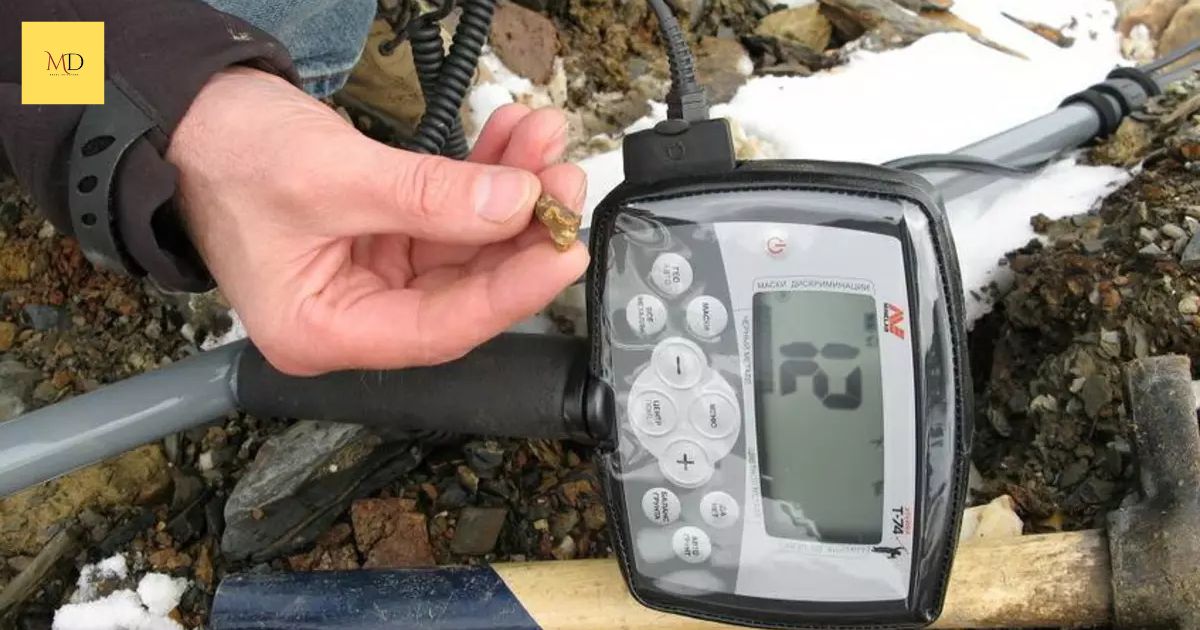Metal detectors are electronic devices that identify the presence of metal objects in a given area. They work by emitting an electromagnetic field and detecting disruptions caused by metal. Commonly used for security and treasure hunting, they alert users with an audible or visual signal when metal is detected.
Ever wondered how deep metal detectors can actually go? If you’re curious about their impressive detection capabilities, it’s time to dig deeper into the world of metal detecting. Uncover the secrets of How Deep Do Metal Detectors Go” and start your own treasure-hunting adventure today.
The depth to which metal detectors can effectively detect objects depends on several factors, including the detector’s technology, coil size, and the type of soil or terrain. Generally, entry-level detectors can reach depths of 6-8 inches, while advanced models can penetrate up to 12-15 inches or more for larger metal objects.
Factors Affecting Detection Depth
Several factors play a crucial role in determining the depth to which metal detectors can effectively detect objects. One of the primary influences is the composition of the soil or terrain where you’re conducting your search. Soils with high mineralization or salt content can limit detection depth due to signal interference and reduced conductivity. On the other hand, clean, non-mineralized soils are more conducive to deeper detection.
Additionally, the size and material of the target you’re searching for also impact detection depth. Smaller objects or those made of low-conductivity metals may not be detectable as deeply as larger, highly conductive items. Metal detector technology is another critical factor. Advanced detectors with multiple frequency options and adjustable settings often have a greater capacity to detect objects at greater depths compared to simpler, entry-level models.
Soil Composition
Soil composition plays a crucial role in determining how deep metal detectors can effectively go. The type of soil in a particular area can greatly impact a detector’s performance. For instance, sandy or loose soils are generally more conductive and allow detectors to reach greater depths, making them ideal for metal detecting. On the other hand, highly mineralized or compacted soils can hinder detection depth, as they create interference that reduces the signal’s penetration capabilities.
Metal detector enthusiasts often need to adapt their techniques and settings depending on the soil composition in their chosen search location. Understanding how soil influences detection depth is key to successful treasure hunting and ensuring that you get the most out of your metal detector’s capabilities.
Target Size and Material
The size and composition of the target being sought are critical factors in determining how deep a metal detector can effectively penetrate. Larger metal objects are generally easier to detect at greater depths compared to smaller ones. This is because larger objects provide a stronger and more easily detectable signal. However, the type of metal also plays a significant role. Non-ferrous metals like gold and silver are typically easier to detect at greater depths than ferrous metals like iron, due to their conductivity and magnetic properties.
The shape of the target matters as well. Irregularly shaped objects may present challenges for detection, as they can produce weaker signals and exhibit a higher degree of signal interference from the surrounding soil. In summary, the size and material of the target are crucial considerations when assessing how deep a metal detector can effectively go, and they play a pivotal role in the success of a metal detecting expedition.
Practical Applications

Practical applications of metal detectors span a wide range of interests and activities. One of the most common uses is coin and relic hunting, where enthusiasts use metal detectors to uncover historical coins, jewelry, and artifacts buried beneath the ground. These discoveries often connect people with their local history and provide a sense of excitement and wonder. Treasure and artifact recovery is another compelling application, often involving the search for hidden caches of valuable items or historical relics.
Beachcombers and water detector users also benefit from metal detectors, as they help locate lost jewelry and coins in sandy shores and even submerged in water. In the field of archaeology, metal detectors play a vital role in uncovering buried treasures and artifacts, aiding in the exploration of historical sites and contributing to our understanding of the past. Whether for leisurely hobbies, serious historical research, or valuable recoveries, metal detectors offer a versatile set of practical applications that continue to captivate individuals worldwide.
Coin and Relic Hunting
Coin and relic hunting is a popular and exciting hobby among treasure hunters and history enthusiasts. It involves using metal detectors to locate coins, artifacts, and other historical relics buried beneath the ground’s surface. These hunts often take place in fields, parks, old homesteads, or historically significant sites. Enthusiasts are drawn to the thrill of uncovering pieces of the past, which may include coins from different eras, buttons, jewelry, military items, and other intriguing relics.
Coin and relic hunting provides a unique opportunity to connect with history on a personal level. Each discovery tells a story about the people who once inhabited the area and the events that transpired. It’s not just about finding valuable items; it’s also about preserving and sharing the historical significance of these artifacts, making it a rewarding and educational hobby for many passionate individuals.
Treasure and Artifact Recovery
Treasure and artifact recovery is an exciting and rewarding hobby that combines elements of history, archaeology, and metal detecting. Enthusiasts often embark on quests to uncover valuable or historically significant items buried beneath the earth’s surface. This pursuit can lead to the discovery of ancient coins, jewelry, military relics, and other precious objects that have been lost or forgotten over time.
The process of treasure and artifact recovery requires a keen eye, patience, and a solid understanding of metal detector operation. Many treasure hunters research local history and potential hotspots before venturing out, which adds an element of adventure and mystery to the hobby. While it’s essential to respect local regulations and seek permission when detecting on private property, this hobby provides a unique opportunity to connect with the past and preserve a piece of history for future generations to enjoy.
FAQ’s
What is the deepest a metal detector can detect?
The depth to which a metal detector can detect objects varies based on factors like the detector’s technology, coil size, and the type of soil or terrain, but generally, advanced models can detect objects as deep as 12-15 inches or more, especially for larger metal items.
How deep can a metal detector go underwater?
The depth to which a metal detector can go underwater depends on its design and waterproof capabilities.
What is the limit for metal detectors?
The limit for metal detectors varies depending on their technology and quality, but they can typically detect metal objects at depths ranging from a few inches to several feet, with advanced models capable of even greater depths for larger metal items.
Conclusion
In conclusion, the world of metal detectors is as fascinating as it is diverse, offering both hobbyists and professionals the opportunity to unearth hidden treasures, explore history, and aid in various practical applications. These versatile devices have proven their worth in security, archaeology, and recreational pursuits. Whether you’re a novice or an experienced detectorist, understanding the factors influencing detection depth is crucial for success.
From the composition of the soil to the type of metal detector you choose, each element plays a significant role in determining how deep you can detect. As you delve deeper into this subject, you’ll find that with the right knowledge and equipment, there’s no limit to the depths you can explore. So, whether you’re hunting for buried relics, safeguarding public spaces, or diving into archaeological digs, the quest for understanding “How Deep Do Metal Detectors Go” is a journey well worth taking.











